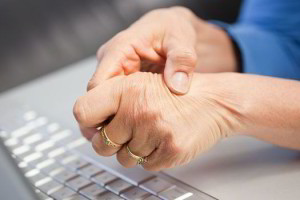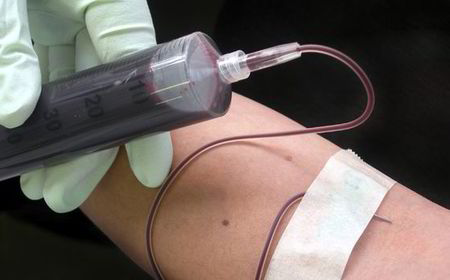
If you suffer from arthritis and joint pain is making it difficult to do even the simplest of things, this series of yoga asanas is for you. Prescribed by yoga practitioners as one of the best and most natural methods to beat joint pain, stiffness and discomfort, this set of six asanas is your best bet against arthritis.
There are some rules though. Do not do these asanas if you experience too much pain, they are best done under the guidance of a trained professional. Also, it is essential that you do these asana in the order metioned below.
Trikonasana: This asana is known for its ability to relieve pain and any disorder of the neck and shoulder. It also strengthens your legs, knees, ankles and chest. It also helps improve digestion and improves one’s rate of metabolism. Apart from that it improves mental equilibrium making you more calm, reduces anxiety and stress, thereby helping you beat acidity and stress related stomach ailments like constipation. According to yoga practitioners this asana is perfect for people who suffer from stiffness of the joints, perfect to relieve arthritis.

Steps to do this pose:
Stand up straight, now spread your legs apart. Turn one foot outwards such that your toes are facing sideways and turn your other foot slightly inwards. Now, stretch your arms sideways. Bend at your hips and lower one arm towards the outward turned leg while allowing the other arm to rise up towards the sky. Make sure you distribute your body weight equally on both your legs. Now, breathe out when you bend down. Place your arm either on your ankle, shin or knee. If you are extremely flexible, try to touch the floor with your palm. Breathe in and out softly and allow your body to relax. Make sure your hips are straight and you are not bending backwards or forwards. Hold this pose for five breath counts. Now, exhale and come up to the standing position. Repeat this on the other side. It is recommended that you do not push yourself too much while doing this pose, take your time to gain some flexibility.
Tips to keep in mind: Do not do this pose if you have high or low blood pressure, a neck or back injury, suffer from migraines or have diarrhoea.
Veerasana: This asana is great to tone the muscles of the thighs, hips and arms. A remedy for arthritis, this pose helps in increasing circulation around the joints (knees, ankle and elbows) that are used, and helps in strengthen them. The increased circulation also helps to bring the joint back into equilibrium making them more flexible. It also has a significant effect on toning

the muscles of the chest and helps improve your lung capacity.
Steps to do this pose:
Sit comfortably on your yoga mat. Extend your legs outwards while keeping your back straight. Now, bend your left leg at the knees and place the toes of the foot under your left buttock. It will look like you have balanced yourself on the toes of one foot. Make sure you don’t put all your weight on this leg. Next, bend your right leg at the knees and place the sole of that foot on the thigh of the left leg.
Now, extend your hands in front of you, then raise them over your head. Bend them at the elbow and join your palms (such that they are in the Namaste position). Bring them down together and place your wrists on your head.
Tip: You might go off balance in the first few times you try this pose. But keep at it, you will eventually be able to hold the pose.
Gomukhasana: This asana is great for your fingers, elbows, shoulders , neck, spine and hip joint. When it is done properly it also helps in improving the circulation of blood in the knees and ankles. Gomukhasana is known to tone muscles and nerves, making them stronger and less stiff. Because of its innate ability to increase circulation in the joints, it also helps in the production of synovial fluid (fluid present between the joints) which helps to lubricate aching joints and reduces friction. Apart from helping your joints function optimally Gomukhasana also helps improve the functioning of your heart and lungs.

Steps to do this pose:
This pose is ideally done while putting all your weight on your knees. But if you suffer from severe arthritis, you can sit in padmasana to do this pose. If you would like to try doing this asana on your knees, bend them and place them on a yoga mat – such that your upper body is erect and your keens take all your weight. Make sure your toes are pointing downwards and are driving towards the ground.
Now take your right hand and bend it at the elbows and place it behind your back. Make sure your finger tips are pointing upwards and are close to your spine. Take your left hand above your head, while bending it at the elbow above your head. Now, while placing it at the nape of your neck, try to grasp your right hand with it. The aim of this asana is for you to be able to hold your hands behind your back. (Read: Stressed out? Try these yoga poses)
Breathe normally and get out of this pose by first sitting down and then bringing your hands back to their normal position.
Tip: You might not be able to place your hands together. This is only due to a lack of flexibility and it will improve with time.
Vriksha asana: Great for your joints and muscles, it is known to be especially great to tone up the muscles of the ankles, toes, knees, hip joints, shoulder joints, elbows, hands and fingers. It also increases the circulation of blood around the affected joints

reducing the amount of pain you feel. Apart from that it is great to tone the muscles of your stomach and abdomen. Apart from helping your core become stronger, it also tones the muscles of the thighs and arms and helps your mind focus and relax.
Steps to do this pose: Stand with your legs together. Now put most of your weight on one leg and a little weight on the other leg. Now raise the leg with the least weight such that your foot is facing inwards, towards your opposite knee. You can hold your ankle to help you pull up the leg. Place the heel of your foot on your inner thigh of the other leg, as close to the pelvis as possible. Now gently raise your hands above your head making sure your fingers are pointing towards the ceiling. Make sure you focus your mind and try to maintain your balance. Breathing steadily and focusing on one spot in front of your eyes helps in maintaining the pose and not falling over. In yoga, it is believed that an unsteady mind leads to an unsteady body. So the more you can control your mind the better you can do this pose. Do not try to hold a chair or wall for support while doing this pose. It will only reduce the intensity of the asana. Keep trying till you can get it just right.
Tip: If you have injured your knee or back please do this asana under the supervision of a trained expert.
Setubandhasana: This asana works exclusively on your spine and hip joints. It also helps relieve pain, stiffness and discomfort in these regions and helps resolve any disorders associated with the neck, arms and palms. This pose also helps keep your blood pressure under control, helps to relax the mind, improves digestion, relieves the symptoms of menopause in women relieves

respiratory problems.
Steps to do this pose:
Lie flat on your yoga mat, with your feet flat on the floor. Now exhale and push up, and off the floor with your feet. Raise your body up such that your neck and head are flat on the mat and the rest of your body is in the air. You can use your hands to push down for added support. If you are flexible you can even clasp your fingers just below your raised back for that added stretch. The key here is to not overexert or hurt yourself while doing this pose.
Tip: Avoid doing this pose if you have a neck or back injury.
Shavasana: Also known as the corpse pose, this is another relaxing pose that allows your body to recuperate. The slow and methodical breathing allows your mind to calm down, lowers your blood pressure and can reduce a headache.

It is also a great way to get a good night’s sleep and beat insomnia.
Source: prevention.com





 Has ever-growing paunch and sedentary lifestyle led you to begin jogging as you approach 40? Read this as a research reveals that those who suddenly take up exercise in their middle years are at the risk of developing ankle arthritis.
Has ever-growing paunch and sedentary lifestyle led you to begin jogging as you approach 40? Read this as a research reveals that those who suddenly take up exercise in their middle years are at the risk of developing ankle arthritis.





